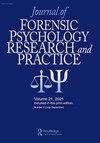The Process-Focused Model for Assessing Risk in Forensic Populations: Explanation, Case Example, and Initial Plans for Establishing the Necessary Evidence Base
IF 1.1
4区 心理学
Q4 CRIMINOLOGY & PENOLOGY
Journal of Forensic Psychology Research and Practice
Pub Date : 2022-02-14
DOI:10.1080/24732850.2021.2016118
引用次数: 1
Abstract
ABSTRACT Comprehensive and efficacious risk assessment must not only use multiple methods of measurement, but evaluators should employ a scientifically-based, systematic approach for integrating multimethod assessment data. One scientifically-based approach for doing this is the process-focused (PF) model, which has the additional advantage of offering a framework for empirically testing examinee-specific hypotheses relevant to the estimation of risk, as well as interaction effects among risk factors via multimethod and serial assessment approaches. However, further research on the efficacy and clinical utility of the PF model is necessary if this approach is to be used in forensic evaluation, especially when considering the standards for expert testimony. After outlining the PF model as it may be applied to risk assessment, this paper presents a case example demonstrating the introduced assessment technique. The authors then discuss the potential benefits of using the PF model for risk assessment before concluding the paper with a justification for future research and suggestions for how to begin establishing the PF model’s efficacy and clinical utility in forensic evaluations.以过程为中心的法医群体风险评估模型:解释、案例和建立必要证据基础的初步计划
全面有效的风险评估不仅需要使用多种测量方法,而且评估者应该采用一种科学的、系统的方法来整合多种方法的评估数据。一种基于科学的方法是以过程为中心(process-focused, PF)模型,它还有一个额外的优势,即提供了一个框架,可以对与风险估计相关的考生特定假设进行实证检验,以及通过多方法和系列评估方法评估风险因素之间的相互作用。然而,如果要将这种方法用于法医评估,特别是在考虑专家证词标准时,还需要进一步研究PF模型的疗效和临床实用性。在概述了可能应用于风险评估的PF模型之后,本文给出了一个案例来演示所引入的评估技术。作者随后讨论了使用PF模型进行风险评估的潜在好处,最后给出了未来研究的理由,并就如何开始建立PF模型在法医评估中的功效和临床应用提出了建议。
本文章由计算机程序翻译,如有差异,请以英文原文为准。
求助全文
约1分钟内获得全文
求助全文
来源期刊
CiteScore
1.80
自引率
12.50%
发文量
53

 求助内容:
求助内容: 应助结果提醒方式:
应助结果提醒方式:


